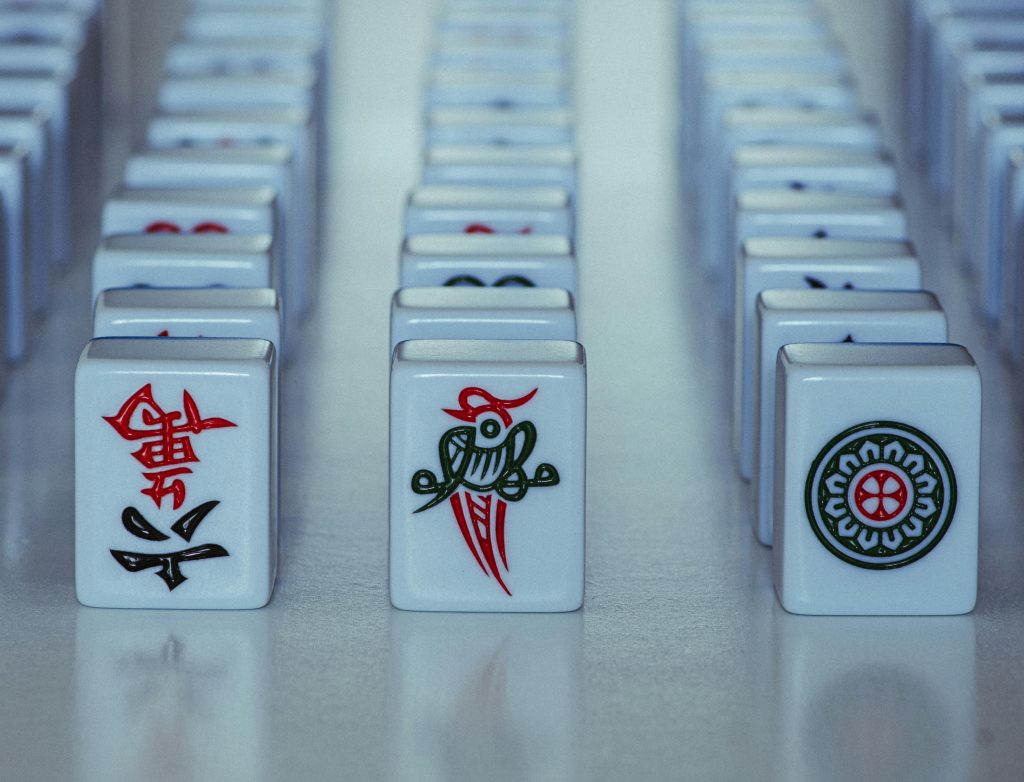Discover the mystical world of Mahjong, where ancient Chinese tile game traditions meet modern strategy in this captivating journey through time
The Rich History of Mahjong
Mahjong, a sophisticated tile-based game that originated in 19th century China, represents one of the most enduring and influential table games in history. Initially developed during the Qing Dynasty, Mahjong emerged as a refined pastime among the Chinese elite, combining elements of earlier tile games with complex strategic gameplay. The game’s intricate designs and rich symbolism reflect the artistic and cultural heritage of imperial China, making it not just a game but a window into Chinese history and tradition.
Origins and Evolution
The exact origins of Mahjong remain shrouded in mystery, with various legends attributing its creation to different historical figures. However, historians generally agree that the game took its modern form around 1850 in the regions around Shanghai. Archaeological evidence suggests that early versions of Mahjong evolved from card games of the Tang Dynasty (618-907 CE), gradually incorporating elements from other traditional Chinese games and developing its distinctive tile-based format.
Global Spread and Cultural Impact
- 1920s: First major wave of Mahjong popularity in the Western world
- 1937: Establishment of the first standardised rules by the National Mah Jongg League in America
- 1950s-60s: Integration into Jewish-American social culture
- 1980s: Rising popularity in Japan and development of competitive variants
- 2000s: Digital revolution and online Mahjong platforms
Understanding Mahjong Fundamentals
At its core, Mahjong is played with a set of 144 tiles featuring various Chinese characters and symbols. The game combines elements of rummy with complex strategic decision-making, requiring players to collect specific combinations of tiles while adapting to opponents’ moves. Recent studies show that regular Mahjong players demonstrate improved cognitive functions, with a 15% increase in memory retention observed in players aged 50 and above.
The 144 Tiles: Your Gateway to the Game
- Character Tiles (36 pieces): Representing numbers 1-9 in Chinese characters
- Circle Tiles (36 pieces): Featuring circles numbered 1-9
- Bamboo Tiles (36 pieces): Showing bamboo symbols numbered 1-9
- Wind Tiles (16 pieces): Representing four directions
- Dragon Tiles (12 pieces): Red, Green, and White Dragons
- Bonus Tiles (8 pieces): Flowers and Seasons
Basic Rules and Gameplay Structure
The game typically involves four players, each starting with 13 tiles. Players take turns drawing and discarding tiles, aiming to complete a winning hand consisting of four sets (either three of a kind or a sequence) and one pair. Modern competitive games usually last about 45 minutes, with tournament matches often featuring best-of-three formats.
Traditional Scoring Systems
Mahjong’s scoring system varies by region and ruleset, but traditionally involves calculating points based on the complexity and rarity of winning combinations. The Chinese Classical scoring system remains the most comprehensive, with over 80 different scoring patterns.
Modern Mahjong Variations
The digital age has transformed Mahjong, introducing new variants while preserving traditional gameplay. According to recent statistics, online Mahjong platforms saw a 300% increase in active users during 2020-2023, demonstrating the game’s enduring appeal and adaptability to modern technologies.
Regional Variants Around the World
- Chinese Classical: The original version with complex scoring
- Japanese Riichi: Competitive variant with simplified scoring
- American Mahjong: Uses special cards and unique rules
- Hong Kong Style: Popular variant with moderate complexity
- Taiwanese Mahjong: Features unique betting systems
Popular Online and Digital Versions
Digital platforms have revolutionized Mahjong accessibility, offering both traditional gameplay and modern interpretations. Mobile apps and online gaming sites provide opportunities for players to practice, compete, and connect with the global Mahjong community.
Competitive Mahjong Scene
The competitive Mahjong circuit has grown significantly, with international tournaments offering substantial prizes. The World Mahjong Championship now attracts over 300 participants from 40 countries annually, highlighting the game’s global appeal.
The Mental Benefits of Mahjong
Research consistently demonstrates Mahjong’s positive impact on cognitive function and social wellbeing. Players regularly engage multiple areas of the brain, promoting mental agility and social connection.
Memory and Concentration Training
- Enhanced pattern recognition capabilities
- Improved short-term memory retention
- Increased focus and concentration
- Better decision-making skills
- Reduced risk of cognitive decline in elderly players
Strategic Thinking Development
Mahjong cultivates strategic thinking through its complex gameplay mechanics, requiring players to balance probability, risk assessment, and tactical planning. These skills often translate to improved problem-solving abilities in daily life.
Social and Cultural Learning
Beyond its gaming aspects, Mahjong serves as a cultural bridge, fostering understanding of Chinese traditions and social customs while building community connections.
Getting Started with Mahjong
Beginning your Mahjong journey requires careful consideration of equipment, learning resources, and community connections. The UK Mahjong Association reports a 45% increase in new members since 2021, indicating growing interest in traditional gameplay.
Essential Equipment and Setup
- Standard Mahjong set (144 tiles)
- Mahjong table or flat playing surface
- Score sheets and counting sticks
- Rule book for chosen variant
- Optional: Automatic Mahjong table
Finding Players and Communities
Local Mahjong clubs, community centers, and online forums provide excellent starting points for new players. Many experienced players welcome beginners, offering guidance and friendly competition.
Tips for Beginners
- Start with simplified variants
- Practice online before joining physical games
- Learn basic tile combinations first
- Join beginner-friendly communities
- Study common strategies and tactics
Preserving Tradition in Modern Times
As Mahjong evolves in the digital age, maintaining its cultural heritage while embracing innovation becomes increasingly important. The game continues to adapt while preserving its core elements and traditional values.
Modern Applications of Traditional Elements
Contemporary Mahjong implementations successfully blend traditional aspects with modern conveniences, ensuring the game’s relevance for future generations while honoring its rich history.
The Future of Mahjong
With growing international interest and technological advancement, Mahjong’s future looks promising. The game continues to attract new players while maintaining its position as a beloved traditional pastime that bridges generations and cultures.
Ready to start your Mahjong journey? Contact us to join our local Mahjong community or learn more about this fascinating game.
Sources
[1] https://en.wikipedia.org/wiki/Mahjong
[2] https://themahjongline.com/pages/how-to-play-chinese-mahjong
[3] https://play.google.com/store/apps/details/details?id=com.onecwireless.mahjong&hl=en_ZA



